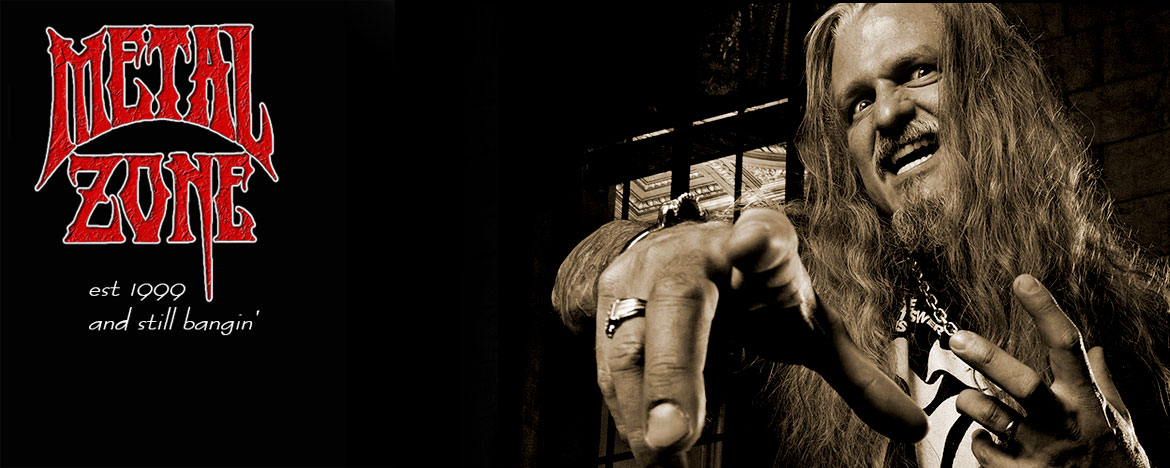Gospel of Grief - Our Symbol Is Death
Gospel of Grief - Our Symbol Is Death
\r\n
\r\n
\r\n
\r\n Athenians and experienced in the Greek extreme metal\r\nscene, Gospel of Grief release in 2010, after many musical and line-up changes\r\nhaving occurred, their first (complete) album, entitled “Our Symbol Is Death”.\r\nTheir influences are actually two and key ones : the Nordic (mainly Norwegian) black metal scene of\r\nthe early ’90s, and the very scene that bred them, the Greek one.\r\n
\r\n
\r\n Their\r\ndebut album is approximately 49’ long, featuring 10 compositions (intro\r\nincluded). Two are the axis rendering\r\nthis release special: first off, the openness they present regarding the songwriting\r\nprogress; although they, themselves, note that their greatest influences are\r\nbands as Darkthrone, Mayhem etc., they (thankfully) cling not to a black metal\r\n“ghetto” . Being progressive themselves, they are much more melodic than their north European mentors. This is due\r\nto the musical fermentation they’ ve developed with the domestic scene (see\r\nRotting Christ). Simultaneously, the production and sound of the album are way\r\ncleaner; this, in no case makes them less “extreme”. The second axis is the\r\nfollowing simple, yet truly important: the “Our Symbol\r\nis Death” has no fillers! The compositions do not show any grain of\r\ncasualness ( in terms both of inspiration and instrumentation/ performance).\r\n
\r\n
\r\n It\r\nis obvious that GoG are trying to\r\ndefine the “golden section” (be it\r\nconscious or not) between high – speed and mid - tempo rhythmic structures. The\r\nhomonymous song is a characteristic one : both the intro and the chorus (0:39 -\r\n1:13 - If it this section can be called “chorus”) feature slower/ tepid tempo,\r\nand fast/ intense playing (e.g. 1:27). However, the essential is that these\r\nvariations take place periodically,\r\nconsistently and throughout the whole song; this applies for all song, hence\r\nfor the whole album. Within these balance GoG \r\nmaster their musical puppets. It has been already noted that they are\r\npretty melodic compared to other bands of the genre. Illustrative examples are given\r\n: Graveyard, Scarlet Centuries (almost\r\nin their entirety), Stories of Doom (3:04\r\nand on) argue in favor of this.\r\n
\r\n
\r\n \r\nTechnically, the band is at a\r\nlevel where no obstacles cannot be overcome. In other words, they can compose/perform\r\nwhatever crosses their mind ( in the genre’s limits of course ). The guitars\r\n(Kaun, A.Z.) are relatively heavy, plus clean. Overall, it feels like a riff –\r\nproduction machine is behind the curtain. At the same time, the guitar solos/\r\nleads, whenever these may occur, they do not spare time for show offs or\r\nmeaningless impressions; melody, for once more, comes to\r\nshoulder the burden. Regarding the vocals, “108”, certainly is a convincing\r\nperformer, trespassing the minimum emotional accent required. Rotting Christ’s\r\nleverage on his performing is obvious, the least. Scarlet Centuries’ section from\r\n1 : 13 – 2 : 21 is literally confusing, and it is not just about the\r\nvocals. It is noted that the multiple vocal lines on the ”Our Symbol Is Death” song have been taken over by Naer Mataron’s\r\n“Kaiadas” ( whose performance is exceptional). “Torm”, GoG’s bassist, is of lower profile. The bass lines are\r\ndistinguishable nevertheless, however it feels like it just passively supplements the main sound, “subjugated” to\r\nthe guitars (at least, this applies to most cases). The album’s drumming has\r\nnot been recorded by GoG’ s drummer, A.C., but by “438”, who frequently strays from “holy blast beats “ (a rhythmic\r\npattern pretty darkish by definition), finding shelter to cleverer rhythm\r\nstructures. However, there happens to be a major drawback, considering the\r\ndrumming. The fills are almost identical, both within a very composition (\r\nwhich is fair), but also from song to song (which is, of course, not\r\nlegitimate).\r\n
\r\n
\r\n The\r\nonly actual blemish on the album has to do with the lyrics’ dimension. It is emphasized\r\nthat only two songs’ lyrics reached my hands (Black Origins of the Universe, The Final End), so there is a high\r\npossibility that the sample may not be representative of the whole. Judging\r\nfrom these two though, the metrics are technically bad (actually they are\r\ndevoid of any technique), and this void, is definitely not filled by the trite\r\ntheme -the concept essentially speaks of an era whose advent is yet to come-\r\n(the theme can rather be viewed as a Nordic inheritance). In addition, logical\r\nfaults can be detected : e.g. “the new man is “re”-born “again”. How many times\r\nwill this dude actually be born? Of course, all these are far from distorting\r\nthe whole picture.\r\n
\r\n
\r\n Collectively,\r\nGospel of Grief has set one foot stalking the mighty Scandinavian coldness,\r\nwhile the other conquers modern Greece, having achieved a fresh, vivid sound.\r\nSimultaneously, the non – adoption of any sectarian view of the black metal\r\ncommunity or any akin stereotypical ( musical) behaviors, is fortunate.\r\n
\r\n

